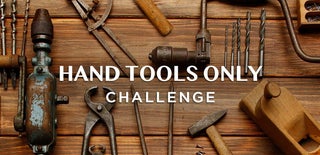Introduction: Hammered Copper Spoon With Simple Tools and Materials
Metal is truly fascinating. It comes in so many forms and is used in so many capacities that the possibilities are literally endless. I’ve been working and playing with various types of metal for about eighteen years now. It really started when I was twelve or so and a friend of mine discovered that we could take copper pipes, hammer them down to make crude blades, and then swing them at each other in the backyard. As a boy, this discovery was, perhaps, the pinnacle of excitement and it led to many an afternoon spent ruining my dad’s tools as I dreamed of slaying goblins and looked for bigger and better ways to implement this new technology.
This project is, admittedly, very different from the crude orc swords I made when I was young, but those early experiments ignited in me a fascination with all kinds of metal and that fascination carries on to this day. Copper remains one of my favorite materials even now. Its golden-orange color, unique malleability, and wide range of uses and applications make it a great medium for all kinds of projects.
This specific instructable details how to make a simple copper spoon using a piece of pipe and hand tools. Making spoons is a great introduction to dishing techniques and this is a really fun, fairly quick project.
Supplies
Tools:
- A hacksaw
- Metal snips
- Pliers (two pairs are helpful but not completely necessary)
- Ball peen hammer
- Dishing tool (this is the only specialty tool in the project. If you don’t have one, you can make one by heating a piece of steel stock and using the ball end of your hammer to make a deep divot in the surface. Any sturdy surface with an indentation will technically work)
- Marker
- File
- Steel wool
Optional Tools:
- Anvil (you don’t technically need this but you do need a solid surface for hammering on)
- Vice (again, not necessary, but it makes things easier for the initial cutting)
Materials:
- A length of copper pipe. The longer your piece of pipe, the longer your spoon handle will be.
That’s it! Let’s get started.
Step 1: Make a Copper Plate
The first thing we need to do is get our copper pipe to become a copper plate. To do this, use your hacksaw to cut a piece of pipe to the length that you would like your spoon to be. Once you have it cut, use your metal snips to cut along the pipe lengthwise. After you have managed to split the pipe, use your pliers to pull the edges of the cut apart. Hammer the piece flat with your hammer and, voila: a flat copper plate.
Step 2: Begin Dishing
Now the fun begins. Set up your dishing tool and lay your copper sheet over it. Beginning from an inch or two back from the end, start hammering a rough, round shape. Use the ball side of your ball peen hammer to force the material down into the dishing tool It’s helpful to rotate the piece and sort of roll it as you go to make sure the spoon comes out even on all sides. Once you have a rough spoon shape, you’re ready for the next step.
Step 3: Cut Off the Excess
Use your marker to mark out a rough spoon shape on your dished plate. Take your metal snips and use them to remove the excess material from around where you marked. You’re looking to get a nice, clean spoon shape so cut your handle to the width you want and then cut out the dished part of the spoon. A little roughness here is fine, you just want to make sure to get close, or you’ll have a ton of shape refining to do in the next step.
Step 4: Refine the Shape
Use your hammer and dishing tool to work out any kinks you see. Roll the spoon around the dishing tool as you hammer and work the spoon toward the shape you want.
Use your file to grind away the rough and irregular edges on your spoon. Run it down the handle to clean up rough edges and across the top of the dished portion of your spoon to bring everything into a nice, clean, uniform shape.
Once you’re happy with the overall shape of your spoon, you may want to do a little hammering on the handle. I like to work down both sides of the handle with the ball side of my hammer to give the whole piece a nice hammered finish.
When you’re happy with the look of the handle, bend it by hand to establish the curve.
Step 5: Cleanup and Polish
Use your steel wool to shine and smooth the spoon. Make sure to it smooth out all the rough edges to avoid slicing your hands or lips when you go to use the spoon. Polish until you’re happy with the shine and then you’re all done!
Step 6: Final Comments
This project is really simple and a ton of fun! Making something by hand is always it’s own special kind of reward and there’s something incredible about joining in an ancient craft like metalworking. These little spoons have all kinds of uses. From reenactment utensils to sugar and tea spoons, they function well and look great! Thanks for following along. I hope you enjoyed this project and I hope you enjoy your spoon!

Runner Up in the
Hand Tools Only Challenge













